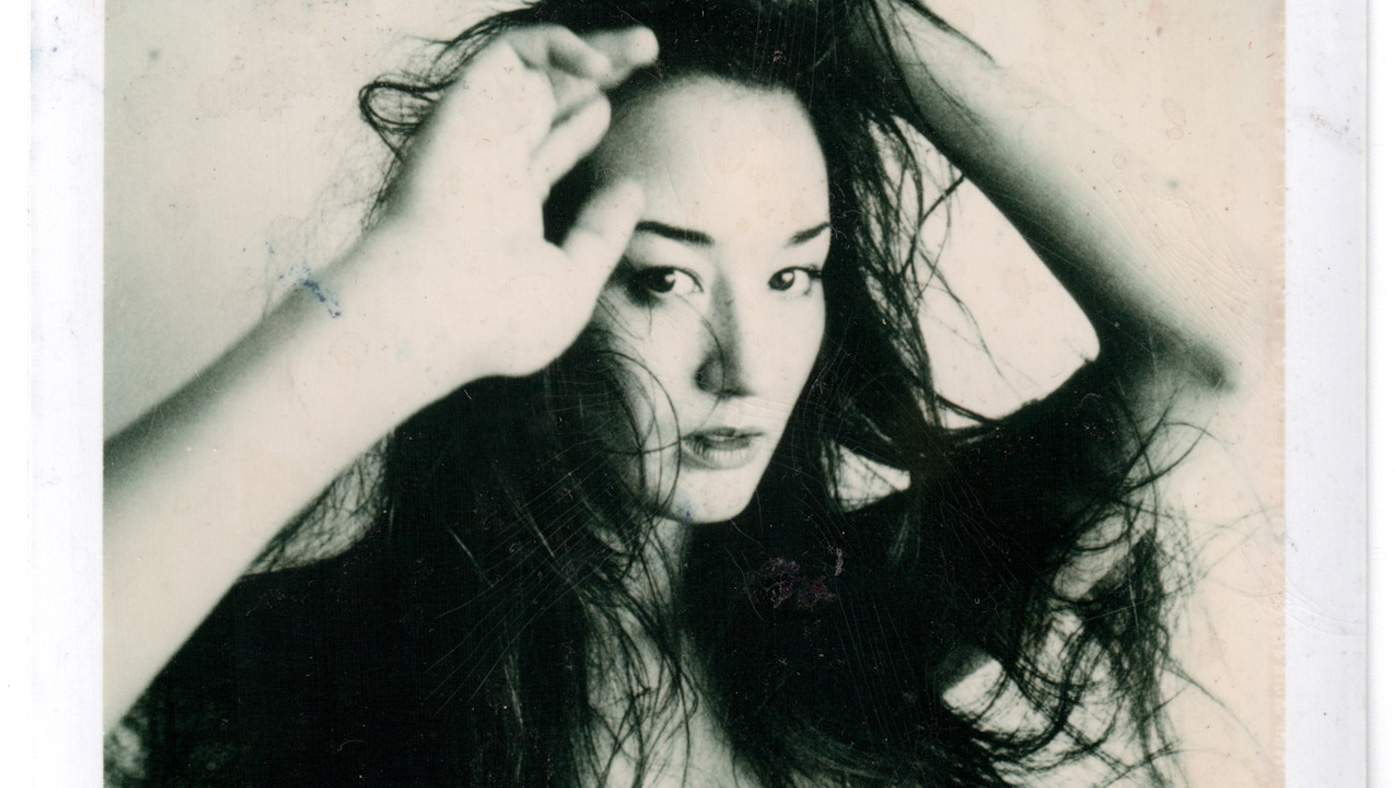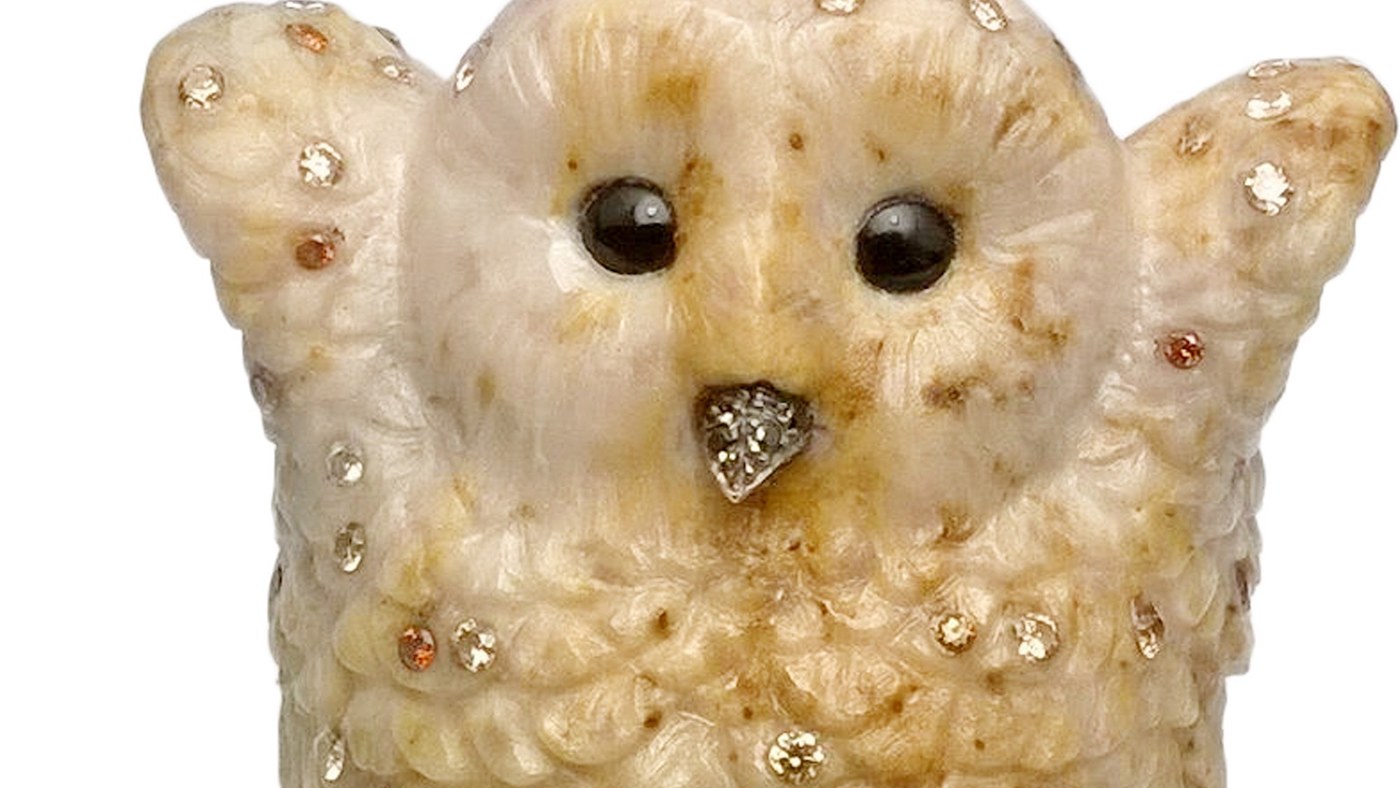Harumi Klossowska de Rola
Artist Balthus' daughter on Jewels, Nature and Paris

After meeting John Galliano in her early twenties, Harumi Klossowska de Rola left London for Paris to join the fashion designer – then a recent graduate of Central Saint Martins – and his fedgling team at their small studio in the rue de la Roquette. Starting out as an intern, Klossowska de Rola quickly rose to the role of PR assistant, all the while enjoying the many diversions the city had to offer. "It was my first time in Paris, she remembers. "I was quite excited to be running around. Maybe after the second year, I really wanted to do something else. I think that’s why I left the fashion world; I wanted to concentrate on something that would suit me more."
Klossowska de Rola turned her attention to fine jewellery; her first designs combined semi-precious stones with trimmings of oriental fabrics. "I was very inspired by the Italian Pre-Renaissance; artists like Piero della Francesca," she says. The delicate colours of her passementerie-like creations were also influenced by the many Chinese buttons collected by her mother, Setsuko Ideta, a painter and second wife of Polish-French modernist artist Balthus.
A 2008 commission by French jewellery house Boucheron introduced Klossowska de Rola to working with precious metals: she commemorated the maison's 150th anniversary with a gold necklace and bracelet, both featuring coiling emerald, sapphire and turquoise snakes. Since then, the 43-year-old has worked with brands such as Chopard, and expanded her own line with a fantastical menagerie of wildlife-inspired jewels. Klossowska de Rola works from the suitably majestic, 18th-century Grand Chalet in Rossiniere, listed as one of the oldest buildings of its type in Switzerland; it has been her family home since the age of five.
The Week
Escape your echo chamber. Get the facts behind the news, plus analysis from multiple perspectives.

Sign up for The Week's Free Newsletters
From our morning news briefing to a weekly Good News Newsletter, get the best of The Week delivered directly to your inbox.
From our morning news briefing to a weekly Good News Newsletter, get the best of The Week delivered directly to your inbox.
Retour d'Expedition, Klossowska de Rola's temporary exhibition at Van Cleef & Arpels's L'Ecole des Arts Joailliers earlier this year, was, as the name suggests, something of a homecoming. Like an 18th-century Romantic artist returning from a Grand Tour, she presented her discoveries: exotic talisman-like creations drawing on distant cultures and untouched nature, often influenced by the verdant forests near her home. "I find inspiration by living in the countryside; everything is inspiring as long as it's nature or animal," says the softly spoken artist, whose zen-like demeanour, long brown hair and delicate complexion play into the notion of her as a reborn Romantic, albeit one who dresses in outfits designed by her friends Haider Ackermann and Giambattista Valli.
Her explorations are catalogued in beautiful booklets resembling rare natural history manuscripts, and this museum of ideas is then restituted through intricately sculpted designs such as her Tito Alba ring, a bejewelled barn owl cast from white gold and fossilised palm wood. The bird is captured mid-flight, its plumage set with black, grey and cognac diamonds. A second ring imagines the zebu, a humped cattle from South Asia, in mammoth ivory with 22-carat gold horns. Such miniature artworks take time to finesse, and Klossowska de Rola works outside the industry’s schedules.

"I don't work to seasons," she says. "It’s more about ideas that suddenly come." When creating new designs, she starts with detailed illustrations in gouache, before sourcing materials which, as well as precious stones, gold and diamonds, include cow and buffalo horn, petrified wood and ebony. "I try to find the exact material that represents the eagle to me,'" says Klossowska de Rola, who then works closely with Italian and French-Swiss artisans to bring her designs to life.
The recent Paris exhibition also included objects such as an imposing alabaster lamp in the shape of a lion's head; cats big and small are a recurring theme in Klossowska de Rola’s work. "I love cats; they are very mysterious. I think it runs in the family!" she enthuses, referring to the felines in the work of her late father.
A free daily email with the biggest news stories of the day – and the best features from TheWeek.com
Balthasar Klossowski de Rola, known as Balthus, was one of the most eminent artists of the 20th century, and counted Pablo Picasso, Man Ray and Antoine de Saint- Exupéry as friends. He met Setsuko Ideta in 1962, while on a diplomatic trip to Japan. Two years later, the couple moved to Italy when Balthus accepted a directorship of the French Academy in Rome at the Villa de Medici. "My father worked every day from breakfast till afternoon," the designer says. "He never had lunch, so the important thing was the five o’clock tea, when the family would gather around sandwiches. The conversations between my parents were mainly about his day in the studio. They spoke a lot of Italian frescos, Chinese paintings and Japanese wabi-sabi. Maybe I didn’t pay any attention at the time, but I kind of think they taught me."
It was at their 16th-century villa in Rome that she first developed an eye for small, beautiful things, foraging for fragments of mosaic tiles buried in its gardens. Then, in 1977, the family relocated to their Swiss home, where they were frequently visited by Klossowska de Rola’s half-brother Thadee and his wife Loulou de la Falaise, the jewellery designer and long- standing muse to Yves Saint Laurent: "She wore amazing ethnic jewellery like Afghan bracelets. I think that’s also why I do what I do; I had such a fascination for her."
Klossowska de Rola's colourful family and prolific artist father inevitably steered her towards a creative career, but it was his gallerist, Claude Bernard, who piqued her interest in precious materials. She recalls being mesmerised by his collection of gemstones during a visit to his Paris apartment as a seven-year- old. "I think I stayed for hours just admiring them and imagining all kind of landscapes and things," the designer reminisces. "This feeling has never really left me.'


